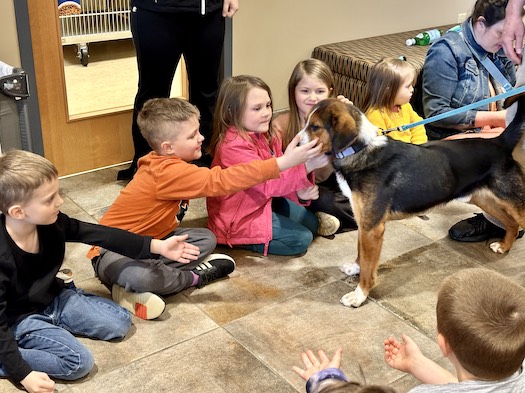Arriving at an animal shelter can feel akin to stepping into a realm where hope and despair collide. The air is thick with the myriad scents of fur, earth, and the faint scent of cleaning supplies, hinting at the battles fought over cleanliness in a sanctuary housing those often forgotten. For many, the experience of visiting an animal shelter for the first time is an indelible journey marked by emotional contrasts—joy found in the eyes of waiting animals intermingling with the sorrow of their pasts.
The moment one enters the shelter, an unmistakable symphony of sounds envelops the senses. Dogs bark enthusiastically, their voices rising in a chorus of yearning and excitement, while cats mewl softly from their enclosures, embodying the mystery of innocence. Each sound tells a story of longing, and the emotional resonance can be overwhelming. Walking through the aisles, each animal seems to possess a silent plea that tugs at the heartstrings, urging visitors to look beyond fur and flesh and delve into the narrative woven into each being.
One may be drawn to a particular dog, perhaps a scruffy terrier mix, who, despite the scars of abandonment, bounds eagerly to the front of his kennel. His tail wags like a metronome, keeping time with the rhythm of hope. This encounter serves as a poignant reminder of resilience—the spirit of an animal that has weathered the storm yet remains unwavering in its desire for companionship. The shelter serves as both a refuge and a testament to survival, showcasing not just the animals, but their indomitable will to live and love.
As visitors navigate through the crowded rooms, one cannot help but be struck by the diversity of life housed within these walls. From the tiniest kittens to the most majestic dogs, each animal is a thread in the intricate tapestry of the shelter’s community. This vivid array illuminates the reality of animal cruelty—each creature’s presence bears witness to their past struggles, highlighting the urgency for advocacy and change. Every wag of a tail, every purr of contentment, is juxtaposed against a backdrop of societal challenges, serving as a call to action to mitigate the suffering of those who cannot speak for themselves.
In the pens, one frequently encounters animals that have endured significant hardship. A timid beagle, perhaps, flinches at sudden movements or loud noises, embodying the scars of a life defined by abuse. Such encounters evoke a profound understanding of the psychological impact of cruelty. These animals are not merely casualties; they are hopeful souls waiting for the right moment, the right person to help them heal. This realization illuminates the inherent responsibility of society—to not only provide sanctuary but also to cultivate understanding and awareness about the long-lasting effects of mistreatment.
Engaging with staff members can add layers to this experience. Their narratives, enriched with anecdotes of resilience, reveal the tireless work that champions the cause of these voiceless beings. They share stories of transformation—of animals who were once battered and broken, now thriving in loving homes. Their investment in each creature signifies a commitment to the fundamental belief that every life deserves respect and dignity. Such discussions are vital, as they transform the visit from a mere exploration to an educational journey, fostering connections between humans and animals.
However, despite the heartwarming stories that emerge, the reality remains that many animals are still overlooked simply because of their breed, size, or age. The dark irony hangs heavy in the air, leading one to ponder the ingrained biases that pervade society’s perception of worth in an animal. Every visit to an animal shelter reaffirms the sentiment that potential lives not only matter—they flourish. It is within this quandary that a profound metaphor materializes: animals waiting for adoption are akin to rough diamonds, bearing imperfections yet exuding extraordinary potential for brilliance.
By interacting with these animals—whether through play, feeding, or simply offering a comforting touch—visitors witness the blossoming of trust. Each gentle stroke and soothing voice fosters a retreat from fear, allowing three-fold healing: for the shelter, the pet, and the human. These small moments resonate deeply, highlighting the symbiotic relationship between people and animals, incubating a sense of shared purpose that empowers both parties.
Moreover, a visit can ignite passion for advocacy and involvement. The stories witnessed in the shelter often embolden individuals to take action, whether through volunteering, foster care, or even legislative support. The emotional awakening experienced can transcend the walls of the shelter, igniting sparks of change within communities. The truth becomes clear: every individual can be a catalyst for change, contributing to the fight against animal cruelty.
Walking away from the shelter, one carries an emotional souvenir—a blend of joy, sorrow, and responsibility. The narrative doesn’t conclude at the shelter’s exit; rather, it expands into the community, rippling outward. Each visit to an animal shelter serves as a reminder that these beings, beautiful and unique in their own right, deserve a life unfettered by pain. They deserve a second chance to inhabit a world filled with love, companionship, and kindness.
In conclusion, a first visit to an animal shelter is a profound encounter that transcends mere observation. It is a poignant experience woven from the threads of empathy, advocacy, and purpose, inviting each of us to contribute to the tapestry of compassion that shelters strive to create. In the journey to eliminate animal cruelty, every moment spent within these walls resonates far beyond their confines, igniting a passion that can spark meaningful change for countless lives.






